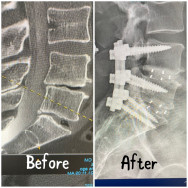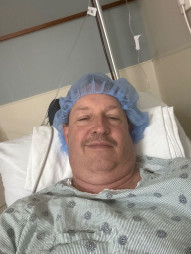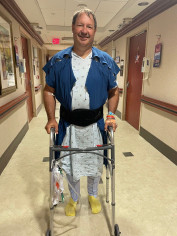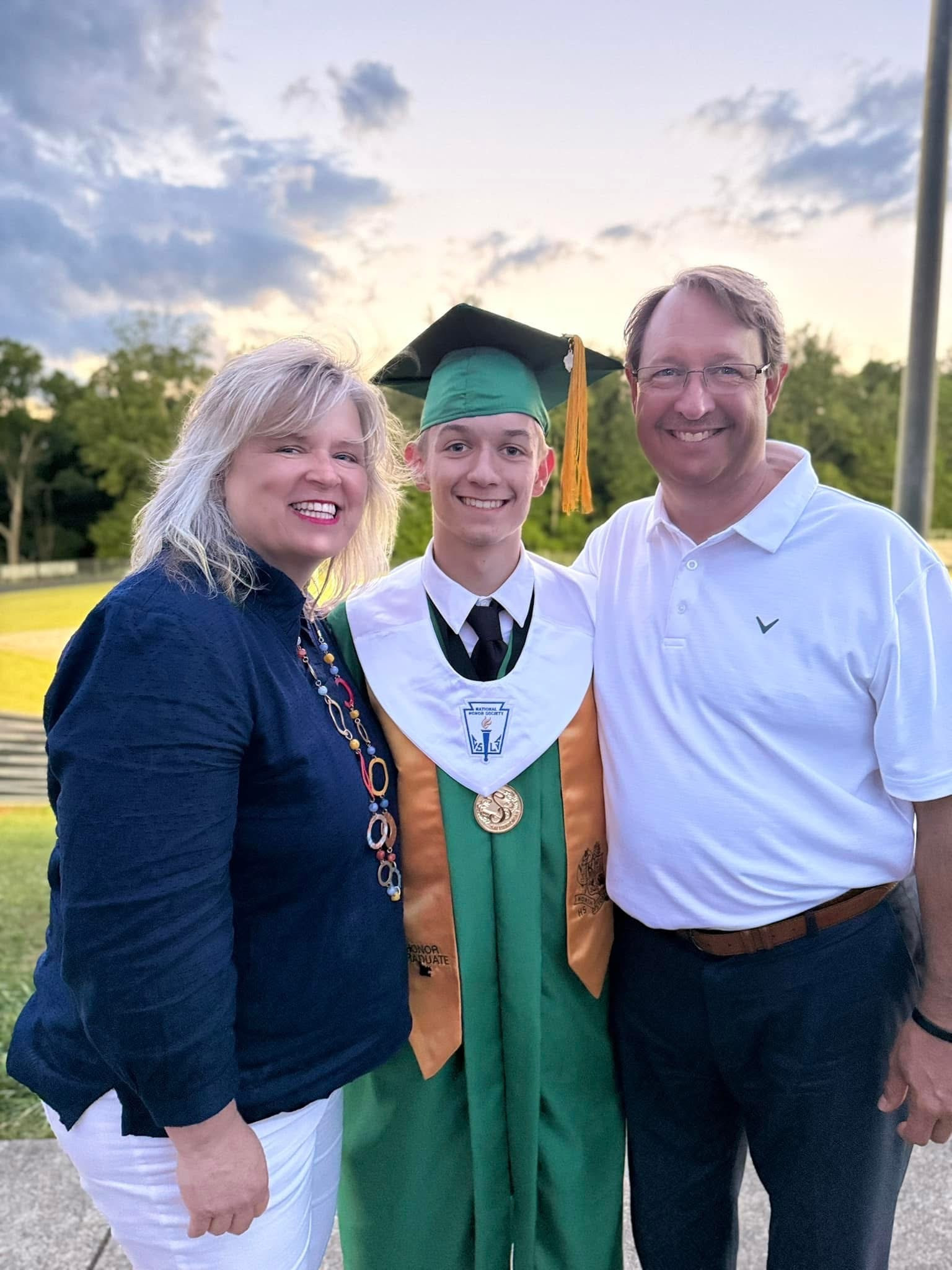A Long Road to Relief: Dwayne’s Journey from Back Pain to Hopeful Recovery
07.10.2025
Dwayne’s Journey from Back Pain to Hopeful Recovery

For nearly 30 years, Dwayne lived with unrelenting back pain. A former paramedic in Guilford County, North Carolina, Dwayne first injured his back on the job in 1996 while carrying a patient down a flight of stairs. That single moment marked the beginning of a decades-long battle with chronic pain, nerve damage, and physical limitations.
“I felt it immediately,” Dwayne said. “But I didn’t know that moment would define the rest of my life.” What followed was a long journey of surgeries, pain management, and learning how to live differently. But through it all, Dwayne had the neurosurgical care team at what is now Carolina NeuroSurgery & Spine Associates (CNSA) in Greensboro.
The Diagnosis and Decline

Dwayne was diagnosed with lumbar spondylosis, lumbar radiculopathy, and foraminal stenosis at the L4-5 and L5-S1 levels. In simple terms, this meant the discs in his lower spine had deteriorated over time, and the spaces where the nerves exit the spine had narrowed. This caused significant nerve compression, leading to sharp, radiating pain through his back and legs, numbness, tingling, and reduced function.
Despite the severity of his condition, surgery was not immediately recommended. Over the years, Dwayne worked with several CNSA physicians, including Greensboro pain management specialist, Dave Eichman, MD. His treatment included physical therapy, steroid injections, medications, and even a spinal cord stimulator, which is a device implanted to help block pain signals from reaching the brain.
“Surgery was always a last resort,” Dwayne said. “They were never quick to operate unless they really believed it was the right thing.”
A Complicated History

By 2004, Dwayne had his first back surgery, followed by neck surgery in 2010. Another back surgery in 2013 left him temporarily unable to walk. That setback eventually led to medical retirement and a significant loss of independence.
“I was on a walker for six months,” he said. “I missed out on so much, like playing with my son and traveling with my family. I lost more than just mobility.”
Even through those painful years, Dwayne never gave up hope. He continued to follow conservative treatments and lived with the help of his spinal cord stimulator. But by 2022, the pain had returned with intensity, and his providers at CNSA recommended he meet with Greensboro Neurosurgeon Henry J. Elsner, MD, FACS.
Surgery with Dr. Elsner
By 2023, it was clear that Dwayne’s condition had progressed significantly. Imaging showed severe degeneration and collapsed disc space at multiple levels in his lower spine. Dr. Elsner took a careful and thoughtful approach, initially recommending observation. But as things worsened, it was determined that surgery was the necessary next step.
In June 2023, Dwayne underwent a Posterior Lumbar Interbody Fusion (PLIF) at the L4-5 and L5-S1 levels, performed in Greensboro, North Carolina. This is a more advanced and intensive procedure than a standard decompression. In a PLIF, the surgeon removes the damaged intervertebral discs and replaces them with bone grafts and metal implants to stabilize the spine. This not only relieves pressure on the spinal nerves but also helps fuse the vertebrae over time, restoring alignment and strength to the lower back.
Because Dwayne had undergone multiple previous surgeries, Dr. Elsner had to navigate through dense scar tissue carefully. The operation ended up lasting nearly two hours longer than expected, as Dr. Elsner removed damaged bone, cleaned out previous surgical debris, and prepared the area for fusion.
Despite the complexity of the surgery, the results were immediate and noticeable. When Dwayne woke up from surgery, he could already tell the difference.
“I could feel it right away,” he said. “Even though I was sore from surgery, the deep nerve pain I had lived with for so long was finally eased.”

A New Way to Live
Today, Dwayne still uses a spinal cord stimulator, which helps him manage lingering nerve discomfort. The device enables him to adjust the stimulation level to alleviate symptoms such as restless leg syndrome and hip pain.
“I use it every day,” he said. “It doesn’t erase the pain entirely, but it gives me back my life.”
Dwayne has even picked up a golf club again. This was a meaningful milestone after years away from the sport he loved. “I’m learning a new swing and a new way to be a golfer,” he said with a smile.

Advice for Others Living with Chronic Pain
Dwayne’s advice to others considering spine surgery is wise and straightforward: Don’t rush. Be patient. And understand the goal.
“I never had back surgery just for pain,” he said. “I had surgery to regain function. The pain may not go away completely, but you can get your life back.”
He credits his recovery to the honesty and care of the entire team at CNSA, from the physicians to the nurse practitioners to the surgery schedulers who treated him like family.
“They don’t just treat your spine,” he said. “They take care of the whole person. And that made all the difference.”







July 10, 2025